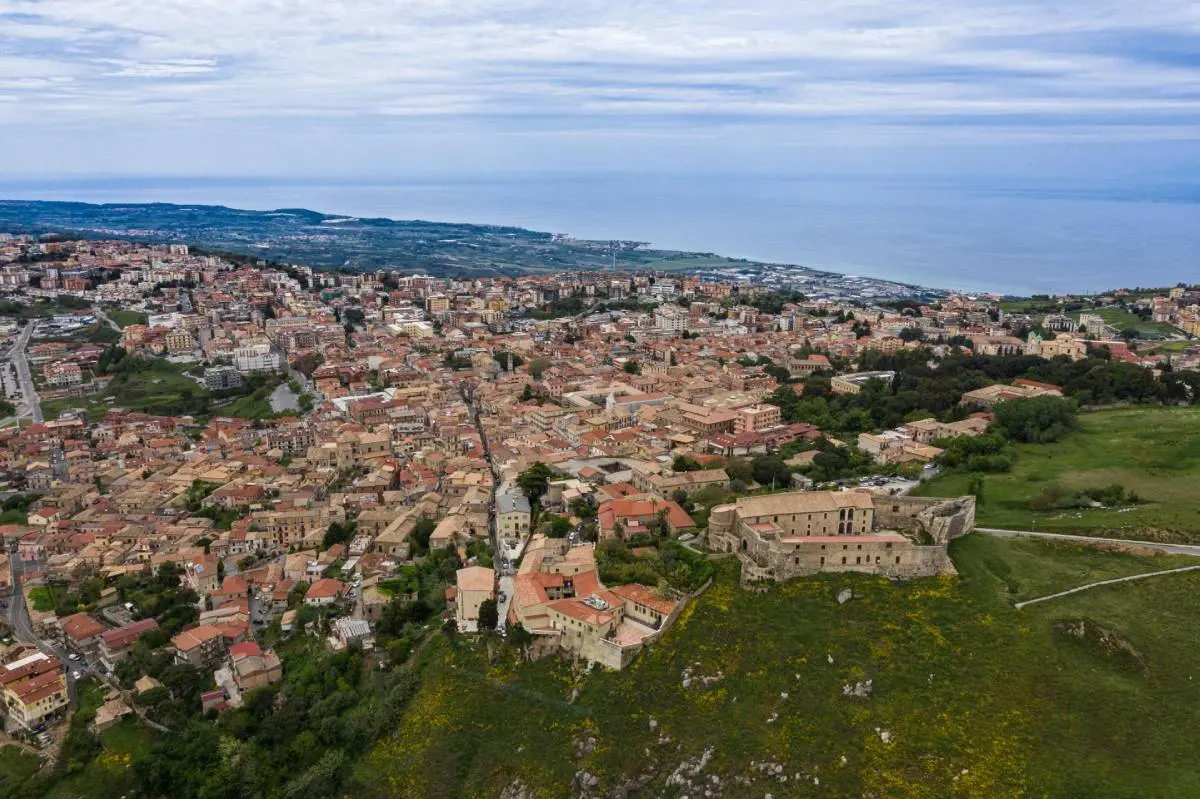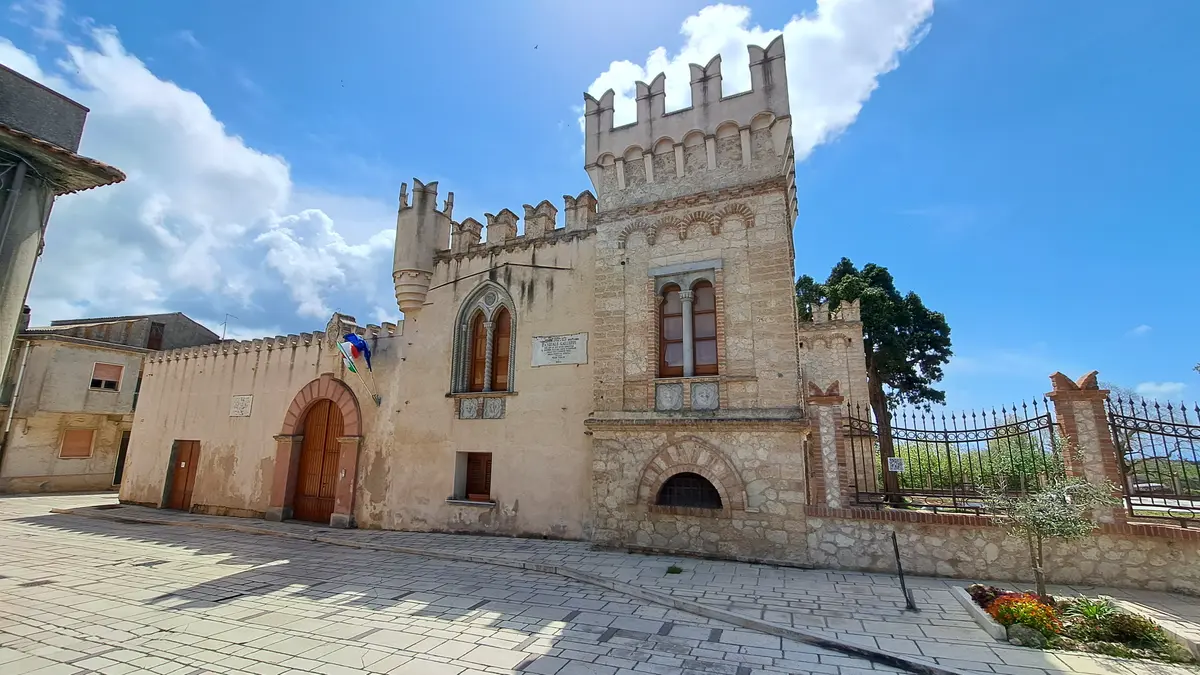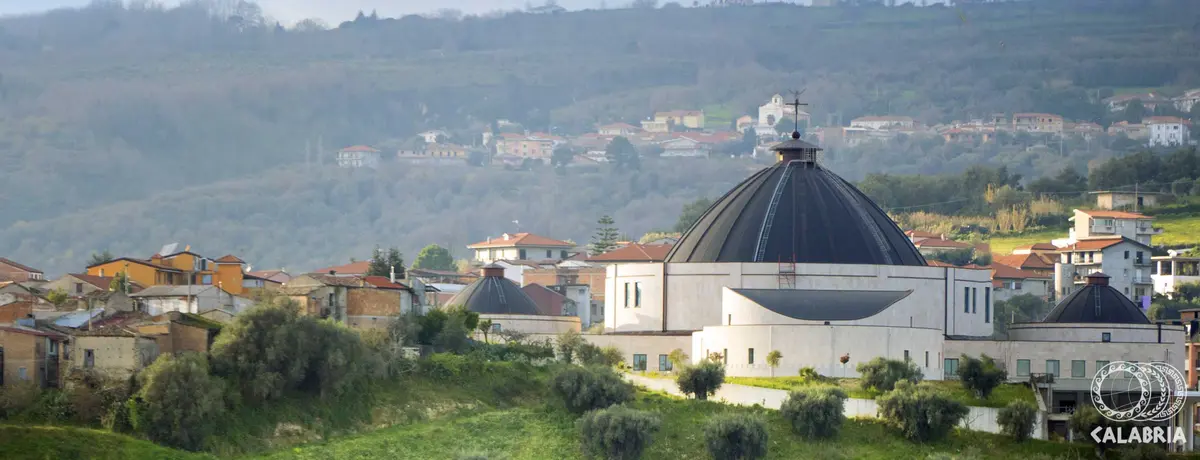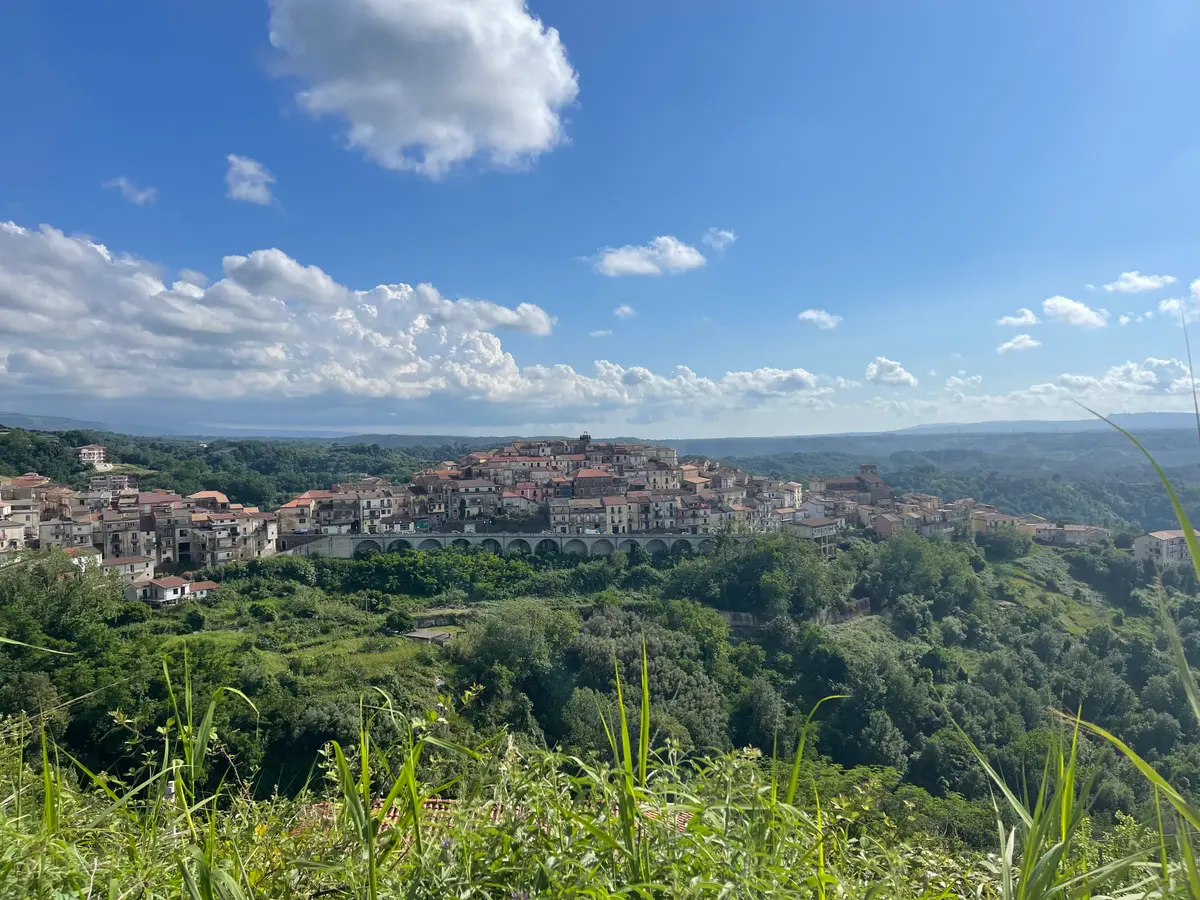San Gregorio d'Ippona
San Gregorio d'Ippona, the land of olive oil
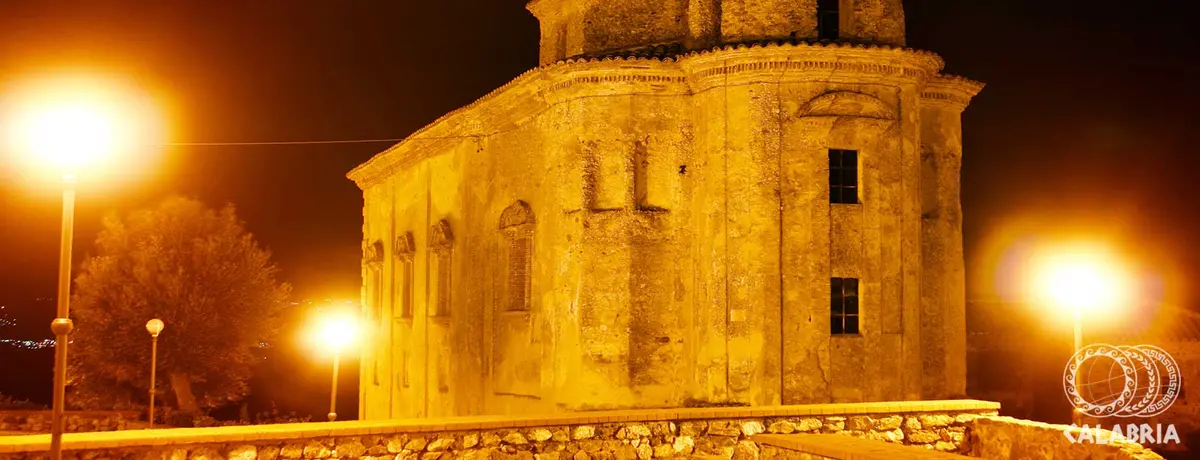
Town
San Gregorio D'Ippona is situated on a terrace between the valleys of the river Mesima and the slopes of Mount Poro. he second part of the village’s name (Ippona) refers to Hipponion, the Greek colony which was originally known as the village of Vibo Valentia. The star of the local produce is the extra virgin olive oil which is extracted from the fruits of the myriad of olive trees surrounding the entire village. The commune of San Gregorio is particularly well-suited to the production of olive oil on account of both its high altitude and its hilltop location, which give it optimal exposure to the sun.
Between October and November, the olives are harvested and pressed in the area's various oil mills. The oil is usually cold pressed and immediately decanted into steel containers or dark bottles. Thanks to this particular process and the high quality of the raw material, the resulting product has an excellent taste.
A must-visit attraction for visitors to San Gregorio is the beautiful church of Santa Ruba. This real treasure is the setting of many, sometimes very mysterious, legends which have survived until the present day.
The commune of San Gregorio is particularly well-suited to the production of olive oil thanks to both its high altitude and its optimal exposure to the sun.
According to tradition, it was built by Roger the Norman just less than a thousand years ago. The monks inhabited the adjoining rooms for a long time. In fact, the last remaining monk lived there until as recently as the beginning of 1900 when he left after the earthquake struck.
Today it is a Marian Sanctuary dedicated to Our Lady of Health. Also worth a visit are the recently built parish church dedicated to Saint Gregory the Great which houses a valuable wooden statue of Saint Rocco; the small church of Santa Maria delle Grazie in Zammarò; the parish church of Santa Maria Maggiore in the hamlet of Mezzocasale; the church of Santissima Madonna del Buonconsiglio; and the church of Santi Filippo e Giacomo. For those who prefer the great outdoors, the hermit caves dug into the hills at various points throughout the commune are excellent places to explore. Over the Easter period, San Gregario hosts the Affruntata, a religious event that commemorates the meeting between the Risen Christ and the Madonna. This festival is typical of the Calabrian cultural and religious tradition and takes place every year.
Sanctuary of Santa Ruba
Considered as the jewel of San Gregorio d’Ippona, the church of Santa Ruba can be found in amongst the town’s green olive trees. It has recently been promoted to a Diocesan Marian Sanctuary with the title of "Maria Santissima della Salute” (Most Holy Mary of Health). No-one is sure why the church was named "Santa Ruba", particularly given that the name Ruba has never existed in the local tradition. For this reason, it is thought that the name relates to the church’s secluded location on a cliff (a “rupe” in Italian), where the monks would have prayed. Its original name is therefore thought to have been "Santa Rupa". The church consists of a symmetrical rural church building, with a semi-circular apse crowned by a central umbrella-shaped dome erected on a protruding cylindrical polygon. The main distinguishing feature of this structure is its dome, located near the high altar, from which you can admire the overlapping layers of tiles arranged in concentric circles. The numerous transformations and adaptations of the building’s baroque superstructures have resulted in changes to the church’s original style. From the outside, visitors can marvel at the church's decorative pilaster strips with broken lines. Towards the top, these start to meander and are framed by ornamental crenellations. The church was inhabited until 1908, when the last remaining friar left because of the damage caused by the 1905 earthquake. It has been abandoned ever since. During that period, in order to prevent the statue of the Madonna from being stolen, various inhabitants of the hamlet of Mezzocasale stored it in their homes before later returning it to the church. This magnificent statue of the Madonna has a unique characteristic: depending on whether the light is turned on or off, her face is either smiling or has a sad expression.
Gastronomy
The gastronomy of San Gregorio is centred around mutton and pork, as well as vegetables (aubergine is widely used) and fish, in just the right proportions. The traditional dishes have been handed down from generation to generation and are all related to annual festivities. Carnivals, giovedi grasso (Fat Thursdays), and Shrove Tuesday are celebrated by eating I Proppetti i porcu (pork meatballs in a sauce) and a dessert of Pignolata and Chiacchiere, which are prepared specially for the occasion.
At Easter, the indisputable traditional dish is lamb, which is cooked in a variety of different ways, such as baked with potatoes, in a spicy sauce or roasted on the grill. Another product that is often prepared in the Easter period is the so-called Curuja cù l'ova (a type of biscuit). Traditional Easter desserts are A curuja di ziti, a doughnut-shaped cake that was typically prepared by the mother-in-law for her daughters-in-law, and I pastetti cu zuccaru, traditional sugar-coated biscuits. The time-honoured Christmas Eve dish is vroccula affucati which consists of corn stalk and broccoli. Cururicchji and zeppole with raisins are eaten for dessert. Among the many typical sweets of the region is nacatuli, a Calabrian specialty which, in San Gregorio, is prepared following a special recipe that includes the addition of wine.
Useful information
What to know about San Gregorio d'Ippona
Infopoint San Gregorio d'Ippona
Via Aldo Moro, 1, San Gregorio d'Ippona
No result
